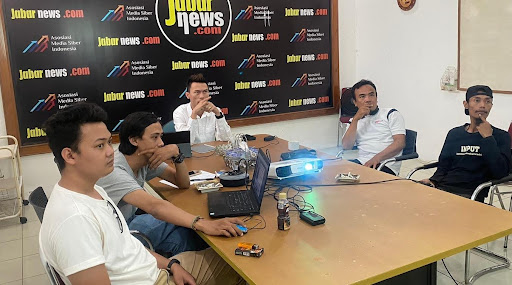This text comes from IPI’s newsletter The Outlook. Click here to sign up to receive future editions direct to your inbox.
This is The Outlook, IPI’s media innovation newsletter, where we take a look at tools and strategies for innovation, and learn from newsrooms that are implementing them.
We are proud to announce that we are collaborating with Report for the World to launch an innovation and revenue roadmap. It will include tips and guidance based on our research and case studies; we’ll share more details in The Outlook soon.
One quick ask from the IPI team: Please take our survey if you haven’t done so yet! Your feedback will help us make the newsletter more relevant to you.
Today we are looking at how news organizations in Indonesia and El Salvador are tailoring their reporting to their audiences ahead of major elections.
The challenge: Showing communities how politics affects their day-to-day lives
Jabar News covers hyperlocal news in the West Java province of Indonesia, focusing on rural areas. During IPI’s Local News Accelerator, they carried out surveys and focus groups with members of their target audience to understand their attitudes towards politics.
The results: “Many rural residents, especially the younger generation, were apathetic towards politics and the election process. They thought that elections only involved going to the polling station, voting, and then it was over.”
However, their research also showed that the same audience wanted more news about social and political issues. The challenge was to find a way to engage them in the topic and link it to audience members’ everyday lives and concerns.
The Jabar News team during an editorial meeting. Photo courtesy of Jabar News
The solution: Innovate your commissioning process
Through IPI’s Local News Accelerator, the Jabar News team were trained in how to design their content around audience needs.
This means that instead of only identifying stories by topic (eg. elections) they focus on defining stories based on their angle and the intended impact on the audience. One way to do this is to use a variation of a ‘user needs model for news‘, which differentiates between:
- Fact-driven stories that help the audience know something
- Context-driven stories that help the audience understand something
- Emotions-driven stories that make the audience feel something
- Action-driven stories that spur the audience to do something
Generally, newsrooms will want to use a combination of the above content types, but if you review the coverage you’re currently producing, you may find some of these formats are under-represented.
The Jabar News team wanted to challenge their audience’s perception of politics as removed from their daily lives, and they quickly saw when they included more explanatory, context-driven content about elections, these stories performed much better with their audience.
Feminist El Salvadorian newsroom Alharaca is another team that has found success with educational takes on politics, as they explained in detail during IPI’s virtual newsroom visit.
This includes a video series ‘La economía es en femenino’ (The economy is feminine), which features two economists who explain current economic topics to the audience. One recent video covers the issue of inflation, its causes, and measures that governments can take to counteract it – taking an issue that the audience can directly relate to in their own lives, and linking it back to the wider context.
These seemingly small tweaks in how to frame a news topic can make a significant difference to how the audience responds, with explanatory content boosting engagement and reach for both media.
News from IPI’s Media Sustainability Team
In case you missed it: Catch up on the highlights of IPI’s media innovation work in 2023. A total of 37 media organizations representing 25 countries took part in IPI’s three innovation programmes, and we can’t wait to see how things progress in 2024!
IPI has also launched the latest round of the IJ4EU programme, supporting cross-border investigations on public interest issues. There will be grants of up to €50,000 available for newsrooms and €20,000 for freelancers , with the first call opening on 1 February.
Funding opportunities for media
- Relevant to the topic of this newsletter: The Advancing Democracy Fellowship, led by Hearken, the Solutions Journalism Network and Trusting News, is accepting applications from US-based newsrooms. The fellowship offers training, support and a stipend of up to $5,000 and the deadline is 19 January.
- The 2024 JournalismAI Fellowship Programme is open for applications from individuals or pairs (which should be one editorial and one technical staff member). This fellowship does not include a stipend but offers support in experimenting with new AI-related ideas. The deadline is 26 January.
- The Milena Jesenská Fellowship Programme offers European journalists a three-month fellowship at the Institute for Human Sciences in Vienna to pursue an in-depth research project. The fellowship includes office space, research facilities and a €3,000 monthly stipend, and the deadline is 28 January.
- Report for the World is inviting independent news organizations based anywhere in the world to join its network. Report for the World funds half the salary of reporters who are hired by successful newsrooms as part of the programme, and newsrooms are expected to provide them with support and mentorship. The deadline to apply is 20 February.
- The CONNECTAS Fellowship is open to reporters with at least four years of experience, resident in Latin America or the Caribbean and working on in-depth investigative reporting. Applicants need to pitch a specific story idea, and successful fellows will receive support on pursuing the topic along with funding up to $3,000.
IPI’s media innovation and sustainability work is made possible with support from the European Union, Friedrich Naumann Foundation and ERSTE Foundation.




